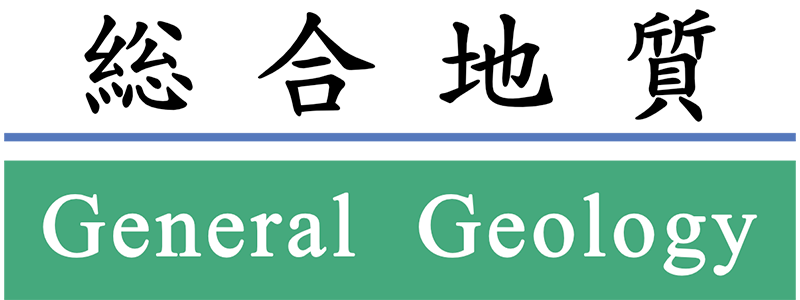

- Article -
Relationship between Holocene sea level change and salinity index obtained by diatom analysis, in the uppermost Pleistocene to Holocene deposits [PDF link]
Tsumoru Sagayama
General Geology, Vol. 3, Page 1–9.
Abstract
Salinity index obtained from diatom analysis for the latest Pleistocene to Holocene deposits indicates relative salinity levels of water in which diatoms were living, and is assigned from 5(composed of marine diatoms) to 1 (composed of freshwater diatoms). Diatom analyses have revealed the maximum stage of salinity (MMS) and temporary decrease of salinity (TDS) followed by MMS for the Ishikari Plain (IS, TK, H16B-3, GS-HTB and RS), Sarufutsu River vally(UH-SRN-1), Shari Plain (Pt1) and Nobi Plain (GS-KZ-1). MMS is assigned to the highest sea level of the Holocene transgression, ca 6,900 cal BP, and a preceding small regression event (TDS). TDS is placed chronologically under MMS, and having possibility to be equal to the 8.2 ka event revealed by ice-core record of Greenland. Salinity index provides a useful tool to global correlation of the Holocene deposits.
- Review -
Was the Eocene magmatism in Hokkaido-Sakhalin caused by ridge subduction? [PDF link]
Kazuo Kiminami and Yasuo Ikeda
General Geology, Vol. 3, Page 10–30.
Abstract
The geotectonic setting of Eocene plutons in Hokkaido and Sakhalin remains poorly constrained. Here, we propose that the plutons are a geological manifestation of subduction of the Izanagi-Pacific ridge beneath the Amurian plate and the Okhotsk block. The Eocene plutons in northern Hokkaido and Sakhalin were emplaced in accretionary complexes formed at the eastern margin of the Amurian Plate. The differences in age of the plutons and the surrounding accretionary complexes are very small (under ten and several million years), suggesting that the Eocene emplacement of the plutons was a consequence of forearc magmatism. The Eocene accretionary complex in northern Hokkaido includes many MORB-type greenstones that were extruded on and intruded into unconsolidated terrigenous clastic sediments, implying the presence of active spreading ridge close to the trench. Our compilation of ages clearly reveals that the plutons from northern Hokkaido and Sakhalin show a northward-younging trend (70 km/my). This evidence suggests a northward migration of a heat source along the eastern margin of the Amurian Plate. The heat source is presumed to be subducted Izanagi-Pacific ridge. A magmatic hiatus at 51-48 Ma and extrusion of adakitic volcanic rocks at 46-39 Ma in the southern area of the East Shikhote-Alin volcanic belt could be resulted from slab window caused by the subduction of the Izanagi-Pacific ridge. Because the plutons in southern Hokkaido were emplaced in an accretionary complex formed at the western margin of the Okhotsk Block but not the eastern margin of the Amurian plate, they deviate from the younging trend shown by the plutons in northern Hokkaido and Sakhalin. Additionally, we examine the geodynamic development of the circum-Okhotsk Sea regions from the Late Cretaceous to the Late Oligocene in order to shed light on the role of Eocene ridge-subduction in the history.
- Report -
Neogene stratigraphy of the area along Toyohira River in Sapporo, volcanic activity of Mt. Moiwayama, and chronostratigraphic implications for the occurrence of fossil Sirenia in Kogane-yu site [PDF link]
Takao Oka, Hitoshi Furusawa, Satoshi Okamura , Daisuke Aoyagi and Kiyoyuki Shigeno
General Geology, Vol. 3, Page 31–55.
(no English Abstract)
- Note -
Inquiring about lost rivers in Sapporo [PDF link]
Seigo Miyasaka
General Geology, Vol. 3, Page 56–59.
(no English Abstract)
- Review Paper -
Kazuo Kiminami
General Geology, Vol. 3, Page 60–63. [PDF link]
Tamblyn, R., Zack, T., Schmitt, A.K., Hand, M., Kelsey, D., Morrissey, L., Pabst, S. and Savov, I.P., 2019, Blueschist from the Mariana forearc records long-lived residence of material in the subduction channel. Earth Planet. Sci. Lett., 519, 171–181.
Kim, S.W., Kwon, S., Park, S.-I., Lee, C., Cho, D.-L., Lee, H.-J., Ko, K. and Kim, S.J., 2016, SHRIMP U–Pb dating and geochemistry of the Cretaceous plutonic rocks in the Korean Peninsula: A new tectonic model of the Cretaceous Korean Peninsula. Lithos, 262, 88–106.
Park, S.-I., Noh, J., Cheong, H.J., Kwon, S. and Song, Y., 2019, Inversion of two-phase extensional basin systems during subduction of the Paleo-Pacific Plate in the SW Korean Peninsula: Implication for the Mesozoic “Laramide-style” orogeny along East Asian continental margin. Geosci. Front., 10, 909–925.
Wu, J.T.-J. and Jonny Wu, J., 2019, Izanagi-Pacific ridge subduction revealed by a 56 to 46 Ma magmatic gap along the northeast Asian margin. Geology, 20, https://doi.org/10.1130/G46778.1.
Full-issue Download Page for the "General Geology" is here .
・Volume 8, Number 1
・Volume 7, Number 1
・Volume 6, Number 1
・Volume 5, Number 1
・Volume 4, Number 1
・Volume 3, Number 1
・Volume 2, Number 1
・Volume 1, Number 1